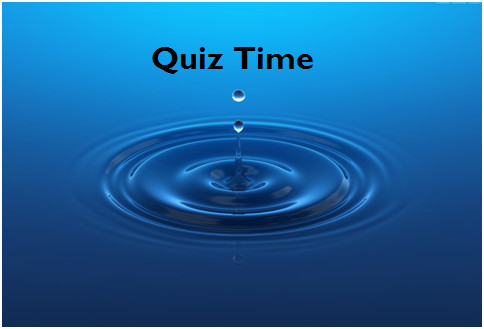Mahoney - Properties Of Water Notes Quiz

Explore the intriguing properties of water with the Mahoney - Properties of Water Notes Quiz. Assess your understanding of adhesion, buoyancy, capillary action, and why water is the universal solvent. Ideal for learners interested in physics and environmental science.
- 1.
Which property of water causes it to stick to your hand, or to the bottom of a leaf?
- A.
Cohesion
- B.
Adhesion
- C.
Density
- D.
Surface tension
Correct Answer
B. AdhesionExplanation
Adhesion is the property of water that causes it to stick to surfaces such as your hand or the bottom of a leaf. This is due to the attractive forces between the water molecules and the molecules of the surface. These forces allow water to "adhere" or stick to the surface, forming a thin layer. Cohesion, on the other hand, refers to the attraction between water molecules themselves, while density refers to the mass per unit volume of a substance. Surface tension is the property that allows water to form droplets and resist external forces.Rate this question:
-
- 2.
What is buoyancy?
- A.
Water's attraction to a lot of things
- B.
Water's ability to rise against gravity in small tubes
- C.
A force in a liquid pushing upward on an object
- D.
The amount of matter in a given amount of space
Correct Answer
C. A force in a liquid pushing upward on an objectExplanation
Buoyancy is the force exerted by a liquid, such as water, pushing upward on an object submerged in it. This force is a result of the difference in pressure between the top and bottom of the object. The greater the volume of the object that is submerged, the greater the buoyant force. This force counteracts the force of gravity, allowing objects to float or rise in a liquid.Rate this question:
-
- 3.
What is capillary action?
- A.
Water's attraction to a lot of things
- B.
A force in a liquid pushing upward on an object
- C.
The amount of matter in a given amount of space
- D.
Water's ability to rise against gravity in small tubes
Correct Answer
D. Water's ability to rise against gravity in small tubesExplanation
Capillary action refers to water's ability to rise against gravity in small tubes. This phenomenon occurs due to the combination of cohesive forces between water molecules and adhesive forces between water molecules and the tube's surface. These forces enable water to climb up narrow spaces, such as capillary tubes, defying the gravitational pull. This property is essential for various biological processes, such as the movement of water in plants and the ability of sponges to absorb liquids.Rate this question:
-
- 4.
Water is known as a universal solvent because
- A.
It can dissolve more substances than any other solvent.
- B.
It's not known as a universal solvent.
- C.
It is used for almost everything.
- D.
It's clear.
Correct Answer
A. It can dissolve more substances than any other solvent.Explanation
Water is known as a universal solvent because it has the ability to dissolve a wide variety of substances. This is due to its unique molecular structure, which allows it to form hydrogen bonds with other molecules. These hydrogen bonds break apart the solute particles and surround them, allowing them to be dispersed throughout the water. This property makes water an excellent solvent for many substances, including salts, sugars, and polar molecules. Other solvents may have specific solutes they can dissolve, but water has the ability to dissolve a larger range of substances, making it the universal solvent.Rate this question:
-
- 5.
The suction cup will only stick to the window if I wet it first. This is an example of what property of water?
- A.
Cohesion
- B.
Adhesion
- C.
Polarity
- D.
Density
Correct Answer
B. AdhesionExplanation
This statement demonstrates the property of adhesion because it suggests that the water molecules are able to stick to the surface of the window, allowing the suction cup to adhere to it. Adhesion refers to the ability of water molecules to attract and stick to other substances.Rate this question:
-
Quiz Review Timeline +
Our quizzes are rigorously reviewed, monitored and continuously updated by our expert board to maintain accuracy, relevance, and timeliness.
-
Current Version
-
Mar 20, 2023Quiz Edited by
ProProfs Editorial Team -
Oct 02, 2014Quiz Created by
Courtney Frank
 Back to top
Back to top


